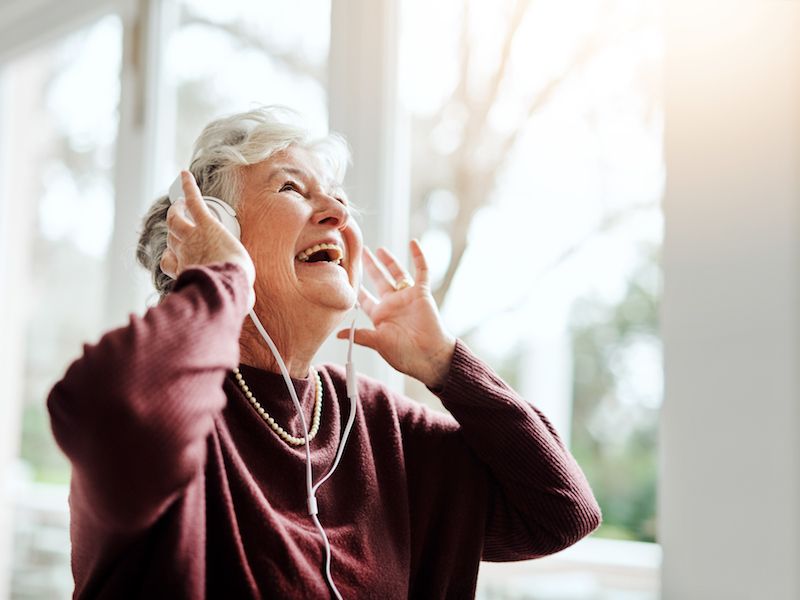
Noise-related loss of hearing doesn’t just impact individuals who work in loud environments, such as construction workers or heavy metal roadies. Recreation related noise exposure can be just as dangerous as work related noise exposure. The most common type? Loud noise heard through headphones, whether it be gaming, streaming video, music, or even an audiobook with the volume turned up.
You might not believe your smartphone or tablet can get that loud. But these devices can achieve continuous volumes of over 105 dB, which is near the ordinary human threshold for pain. This is the volume where noise starts to literally hurt your ears. So what’s the answer for safeguarding your hearing against volume related damage.
The volume level here is essential. Listen with the volume at or below 60% for 60 minutes or less at a stretch (how long you listen for also matters), this is called the 60/60 rule.
Your Hearing Aids Can be Set up For Listening to Music
If you wear hearing aids, you’re most likely streaming your device right to your hearing aids, so make certain the volume is not too high or that you’re not trying to drown out other noises with your music. And there are more appropriate ways to listen to music so consult us about that as well. If you’re a musician or someone who loves music you might have noticed that most hearing aids are developed to sharpen the clarity of voices…not necessarily music. While listening to music, we can probably make some adjustments to help better the quality of sound and reduce the feedback.
Selecting Headphones
If you don’t wear hearing aids, there are lots of options for shopping for headphones. It may be a matter of personal preference, but there are some things you should consider there as well.
Over-the-Ear Headphones
While the foam-covered speakers that was included with your old Walkman are mostly no longer used, over-the-ear headphones have made a comeback. Often shockingly pricey, they offer a large variety of color options and celebrity endorsements, and of course, better sound quality. And these headphones cover the entire ear blocking out noise, unlike those old foam ones.
Conventional perception is that these are less dangerous than in-ear headphones because the source of the sound is further from your eardrum. But because the speakers are larger they are normally capable of much higher sound level. Noise cancellation can be a helpful thing as long as you’re not missing needed sounds such as an oncoming vehicle. But on the upside, you don’t have to compete with outside noise so you can enjoy your music at lower volumes.
Earbuds
The normal earbuds that are included with devices like iPhones are known for their inferior sound quality, though many people still use them because hey, they came with the phone. In addition, with newer devices that lack a headphone jack, staying with Apple’s earbuds can simply be easier.
The drawback, aside from the poor sound quality, is that basic earbuds don’t block outside noises, so that it’s more likely that you will pump up the volume. It’s generally believed that sticking earbuds so close to your eardrum is the primary concern but it’s actually the volume.
Noise Canceling Earbuds
A lot of people opt for earbuds with a rounded, rubbery tip both because they’re more comfortable than standard earbuds and more effective at blocking outside noises. The rubber conforms to the shape of your ear, creating a seal that blocks other noises from getting in. Not to sound like a broken record, but these have the same downsides as the other two (volume is the main problem), as well as carrying the same caution as over-the-ear headphones (they can block out warning sounds). And if you have hearing aids, obviously these won’t work for you.
You may have to try out more than one pair before you find headphones that work for you. Your expectations, acoustically, will differ dependant on what type of usage you normally give them. The essential thing is to seek out headphones that make it comfortable for you to enjoy at a safe and secure volume.
How to be Sure Your Hearing is Protected
Is it Safe, How Can I be Sure? There’s an app for that…If you use a smartphone, you can get the National Institute for Occupational Safety and Health’s free Sound Level Meter app. You can get other apps, but research has discovered that the dependability of these other apps is hit-and-miss (additionally, for whatever reason, Android-based apps have proven to be less accurate). That motivated NIOSH to create their own app. The app lets you measure external sounds, but you can also measure the sound coming from your device’s speakers, so you will know exactly how much volume your ears are getting. It’s a little bit of work, but putting in place these types of protective steps can help protect your hearing.